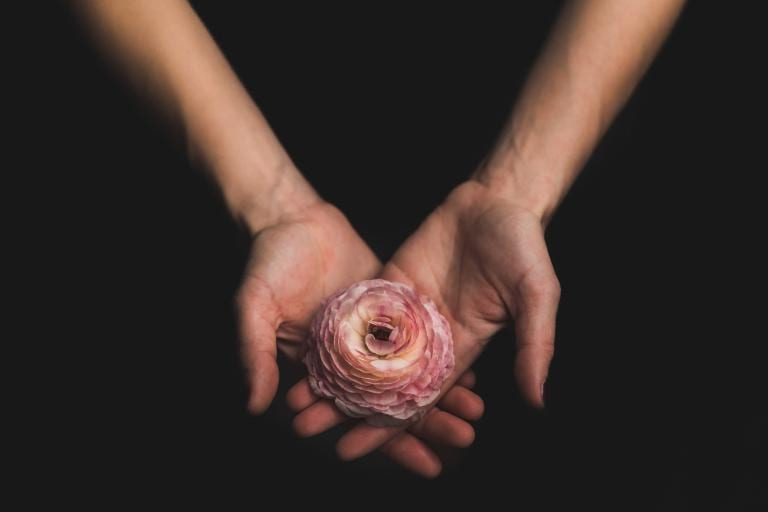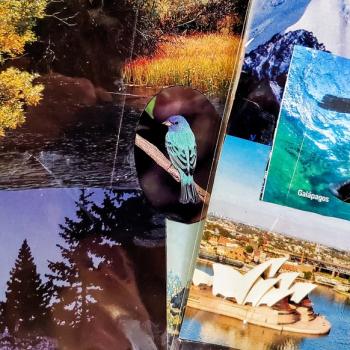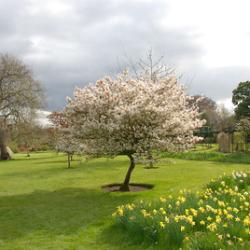
“Prayer can cut through our intellectual barriers and touch our hearts, enabling us to feel truly held and embraced… The most meaningful prayers are not cleverly written but sincerely delivered. Cerebral prayers can leave us cold. The purpose of prayer is not to outline one’s systematic theology; it is to put the mind and the heart together in a spirit of attentive, calm, and quiet awareness… In theistic language, to pray is to make a humble presentation to [the Gods]. It is an acknowledgement of our limitations, a statement of our hopes and longings, and a concession of our will.“ Worship That Works: Theory and Practice for Unitarian Universalists
Do you pray? I mean really pray?
Pagans, especially those of us hailing from Wiccan or Wicca-esque backgrounds, tend to have wonderful ritual language to call on. We have cleverly constructed phrasing for lighting candles, pouring out offerings, hailing the Gods and Spirits and invoking various forces. We have rhyming incantations, ritual gestures and all the smells and bells you could ever desire.
But do you pray? In a pastoral counseling session, one of the first things I ask about is my client’s spiritual practice – what forms it takes, what practices they follow – and I’m always surprised by how many of us don’t pray. We make offerings. We go for walks in nature. We meditate, journey or do pathworkings. We build elaborate altars. But prayer? Deafening silence. It’s a tool of connection we’re collectively leery of. Without realizing it, many of us hold ourselves rigidly apart from one of the deepest wells of sacred connection. We conflated some of the poison of the religious systems we left with some of the forms those religious systems contained.
Prayer is radically intimate. Do you let down your guard and allow the deepest voice within you to speak, or to scream, or to wail? So many of us carry raging storms within us – frustration, anger, fear, grief, pain – but we never think to offer up these bloody fruits to the Gods. It doesn’t occur to us that the Powers we serve want ALL of us. They want the brokenness and the confusion and the doubt as much as they want the rising smoke, the offerings and the beautiful invocations. We forget that They know suffering, too. Their myth cycles reflect it – the Gods grieve, fight, mourn, lose their tempers and even weep.
So how can Pagans pray in a way that allows for deep intimacy but doesn’t trigger our hangups from the religions we escaped from?
In my personal practice, physical position makes a big difference. I frequently weep when I pray and being seated supports that. I generally sit in a comfortable chair and not necessarily in front of my altar. Prayer can happen anywhere. I do not kneel – for me, that brings up unhelpful memories. I have a few different ways I like to position my hands depending on what I’m feeling. Sometimes I let them rest comfortably in my lap. Sometimes I place one hand flat over my heart then cover it with the other hand. My spirituality blended with my yoga practice many years ago, so I will also occasionally use mudras. My personal favorite is dhyani mudra – palms facing up, one hand resting in the other, thumbs touching to create an open circle. One thing I avoid is ‘prayer hands.’ This is not a helpful position for me or for most Pagans I know – it’s too heavy with connection.
Sometimes when I am overcome, when my prayer is the howling of anguish or the crashing waves of grief, I will take Child’s Pose, lie flat on my belly, or curl into a ball on my side.
I read the Brother Cadfael series when I was a tweeny and the way the lead character described praying always stuck with me. In one of the books, Cadfael talked about imagining the people he was praying for as roses cupped in his hands and simply cradling them and holding them in the sunlight. I love that image. When I am praying for others, that’s exactly what I imagine.
When I pray for my ancestors, I imagine standing in an open clearing in the forest. One by one, I welcome my Beloved Dead into that space. I start with those closest to me: my uncle, grandparents and friends. Then I begin welcoming those I knew less – great grandparents, more distant relatives. I welcome them all in until that field is full of spirits. Again, I use light here – I imagine sunlight filling the clearing and I pour light and adoration into my friends and family.
When I pray to the Land Spirits, I like to sit outside on my front porch. I close my eyes and let my consciousness blend with the land I live on. I use this same technique when I’m praying to Land Spirits that I am visiting. Once I feel that connection, I pray: supplication, adoration or gratitude, the connection comes first regardless.
When I pray to the Gods I serve, there is frequently no visualization at all. I just let down my guard, my shields, my dignity, and pour out the deepest singing of my soul. Sometimes it’s beautiful. Sometimes it’s an expression of pain. I let those Powers just hold me and hear me in that broken-open place. I pray until the waves of emotion grow calmer and the storm inside of me begins to run out of rain. This form, this state of open authenticity, is one of the most healing for me. I feel heard in a time period when it’s all too easy to feel voiceless and helpless. I have a place to take the challenges, and the resulting emotional tides, life throws at me.
So, do you pray? What physical positions work best for you? What do you visualize, if you imagine anything at all? Hit me up in the comments. And may your prayers be heard and held, always.














